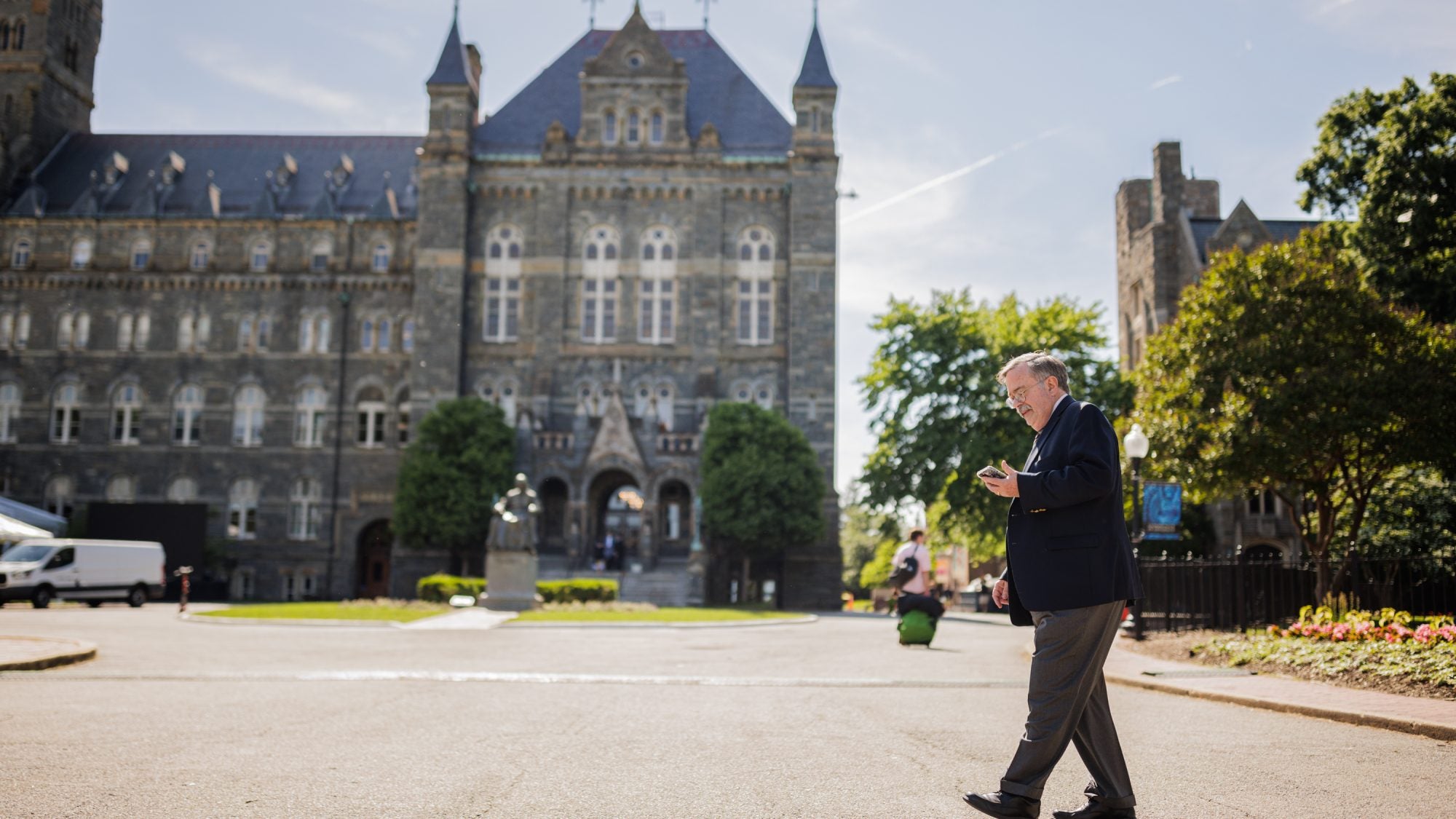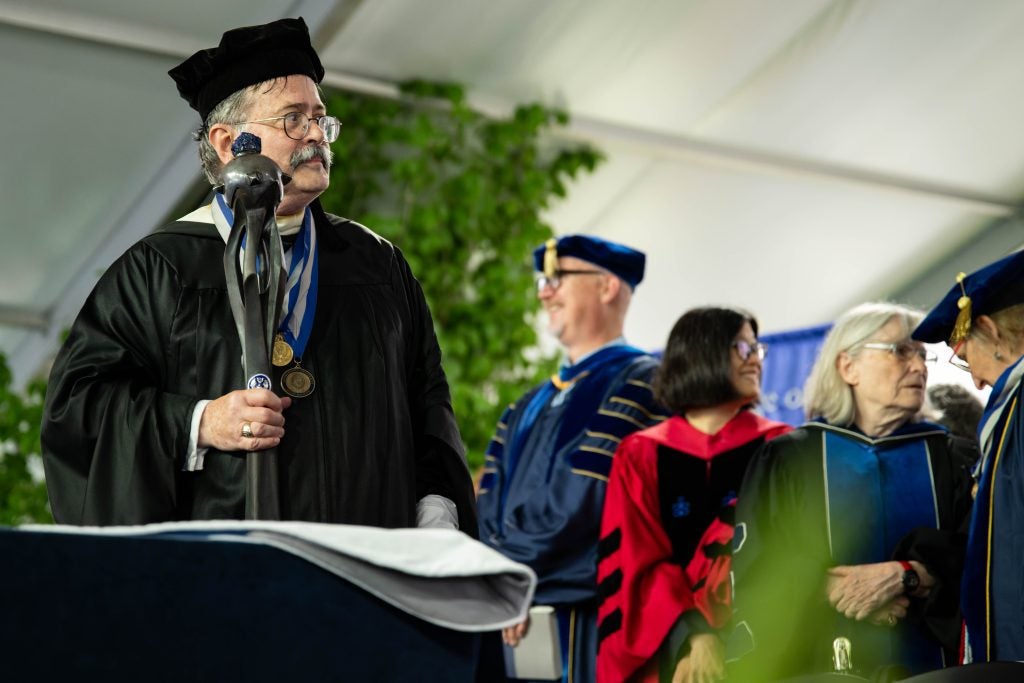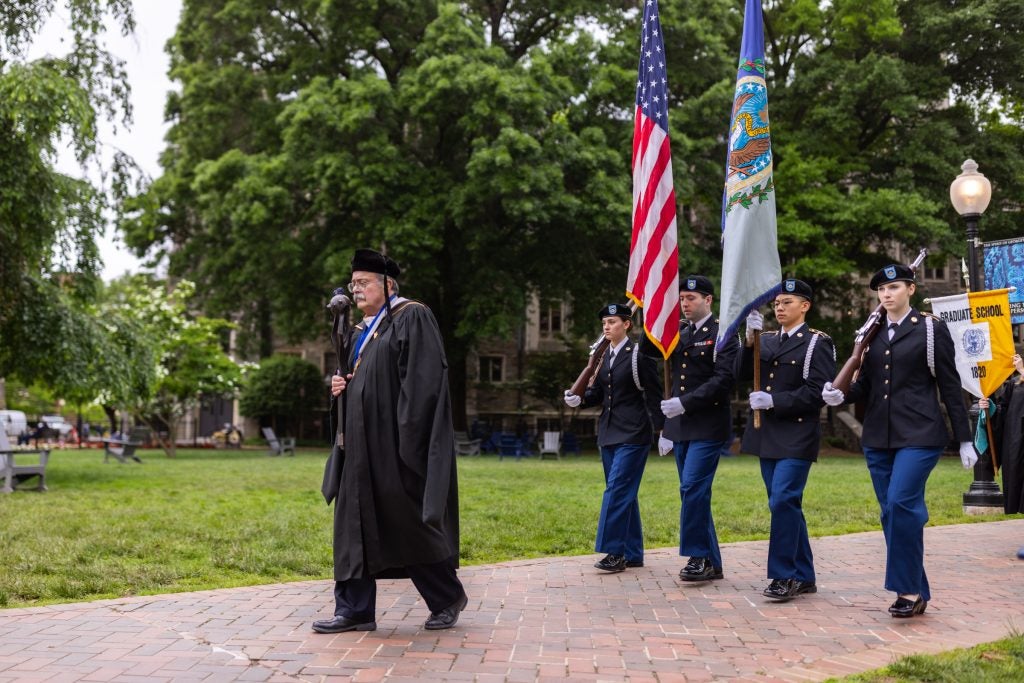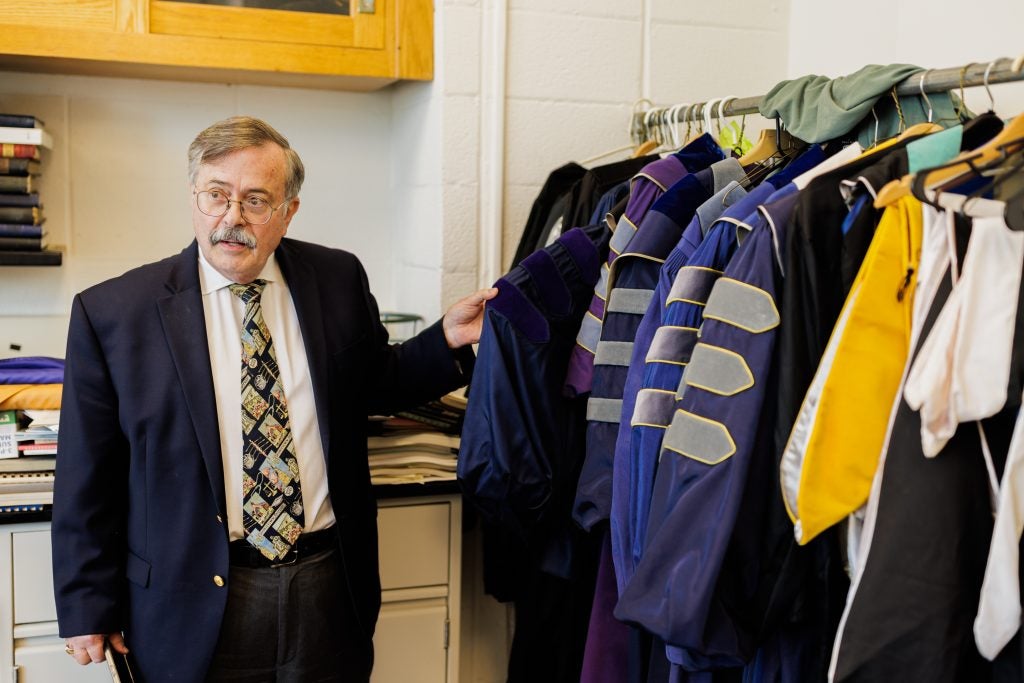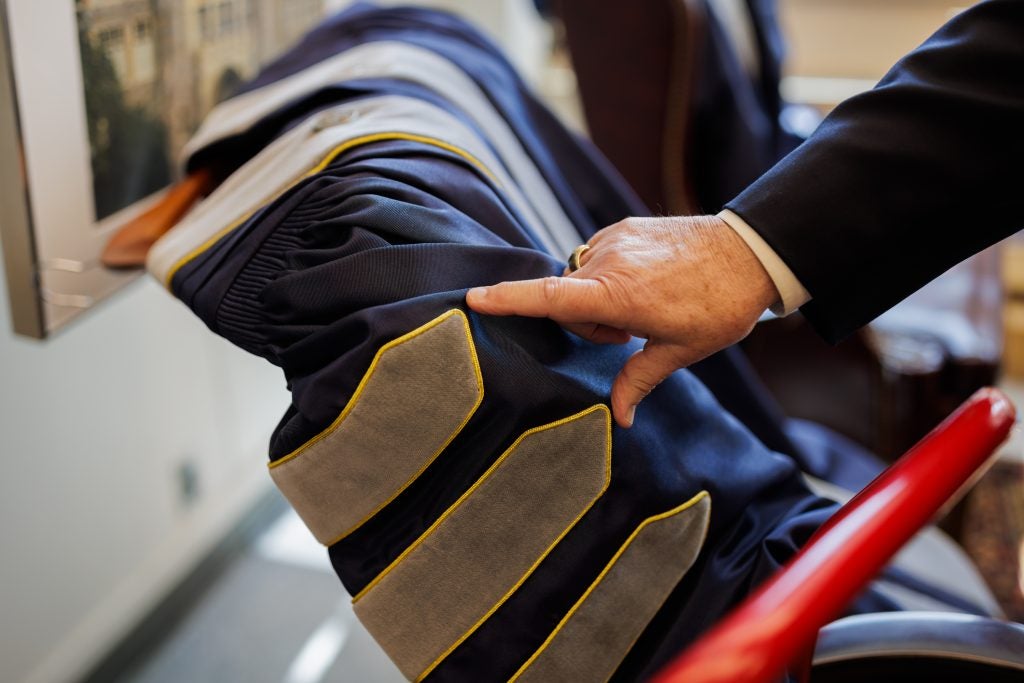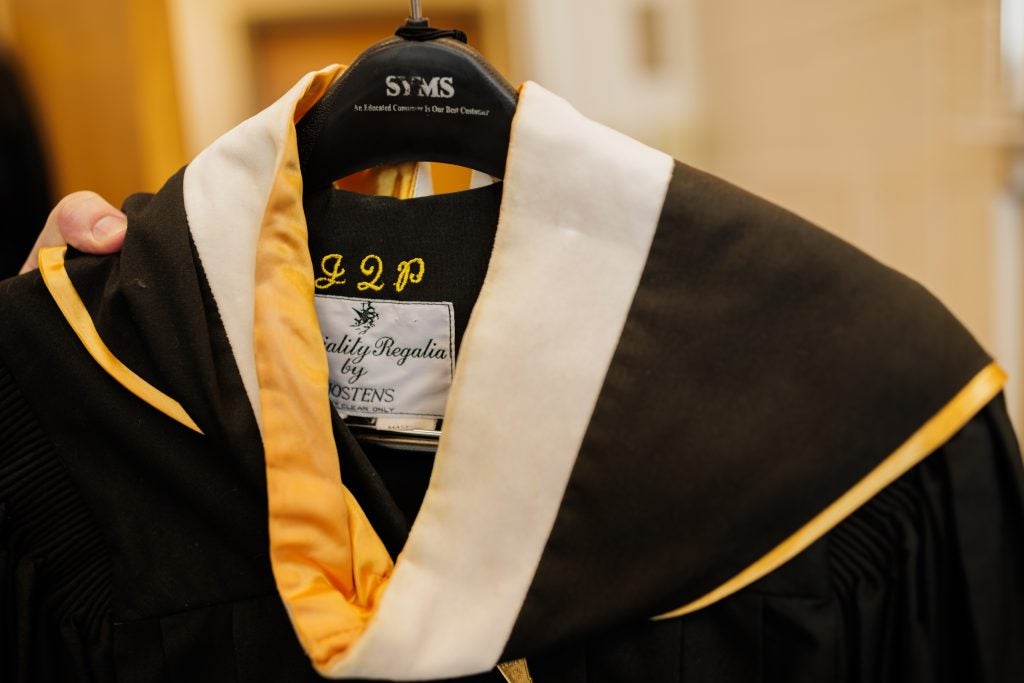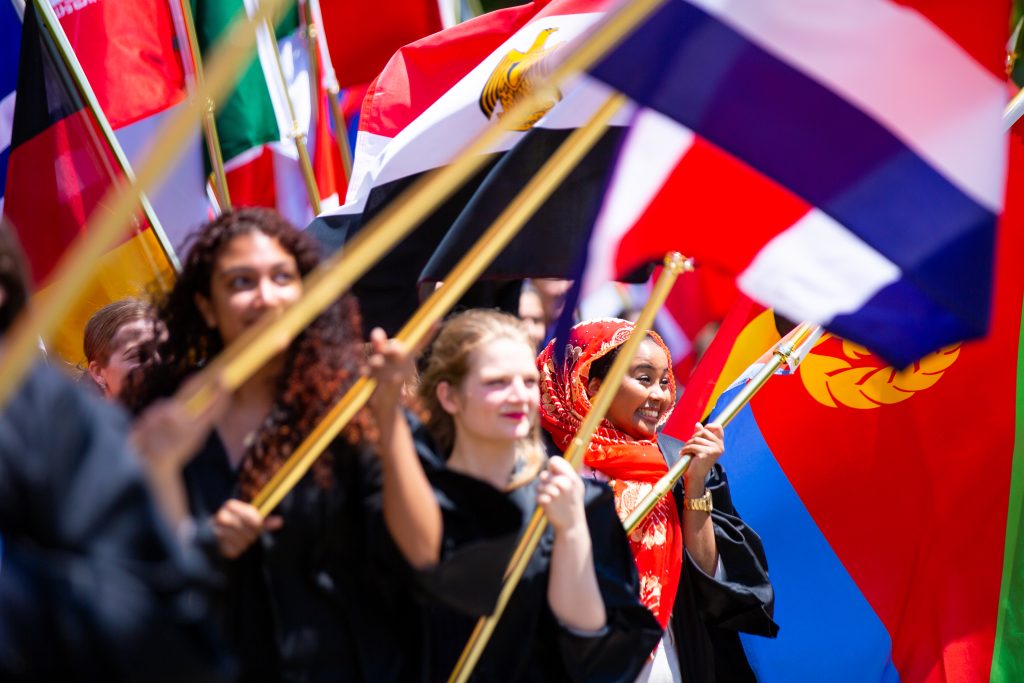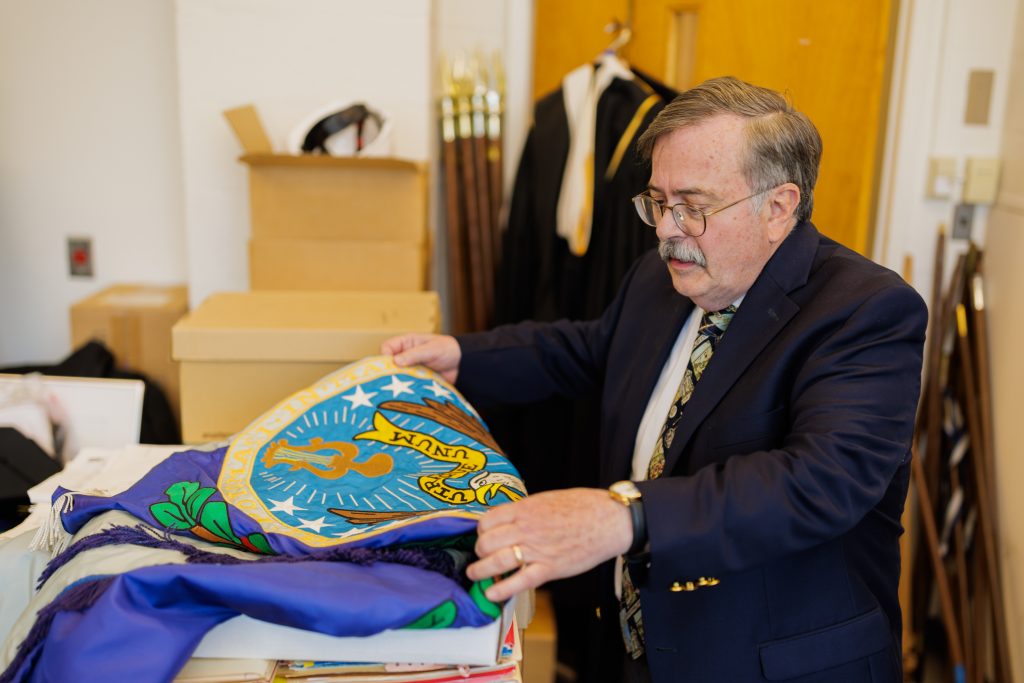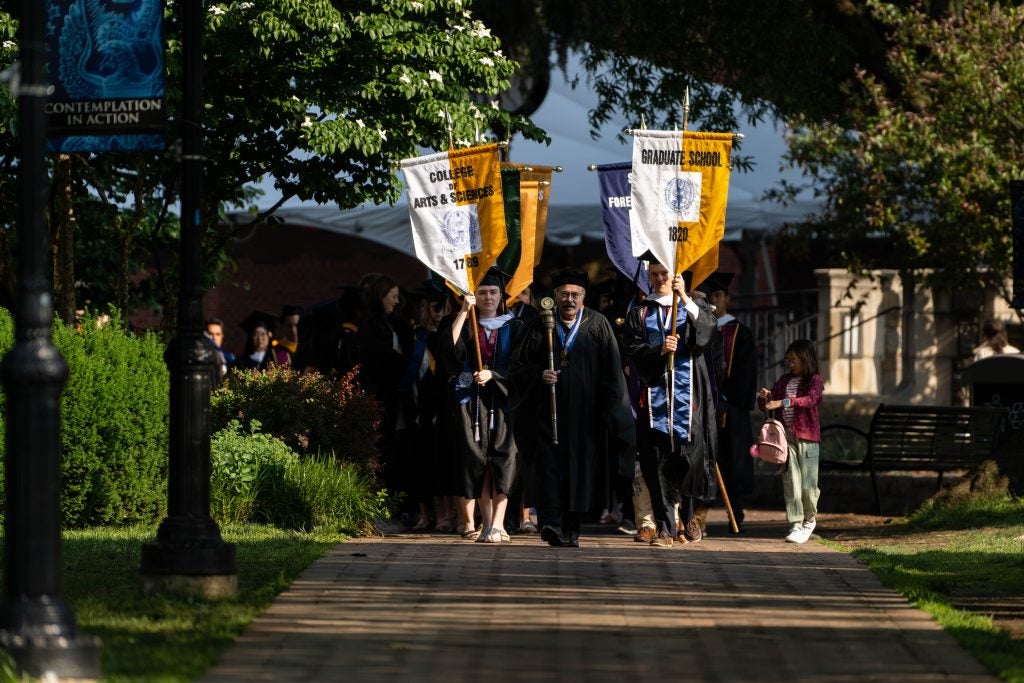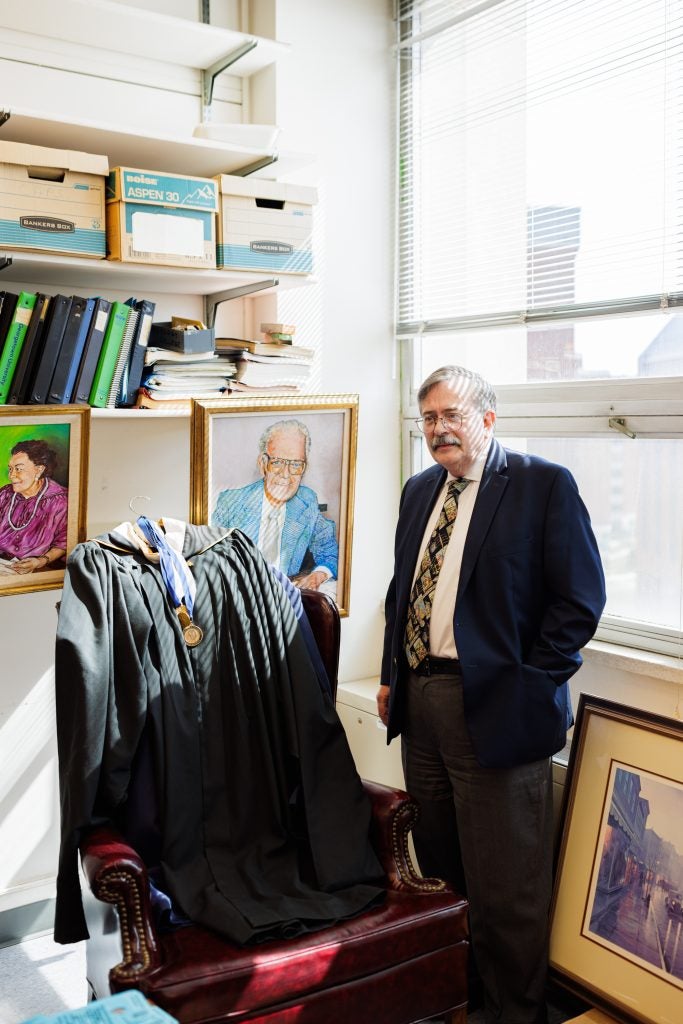At 8 a.m. on Saturday, John Pierce (C’72) is checking his watch. He needs to ensure that 851 students have started lining up in alphabetical order.
By 8:25 a.m., he has asked a colleague to cue the brass band. Students in caps and gowns begin walking across Copley Lawn to Healy Circle and into a tent filled with loved ones. Graduation has begun.
Over the course of five days, the ceremony will be repeated 14 times, including for each of Georgetown’s schools, senior convocation, Baccalaureate Mass, and a special ceremony for graduates who cannot attend graduation due to athletic competitions. Every ceremony procession needs to go like clockwork. And every minute has been planned.
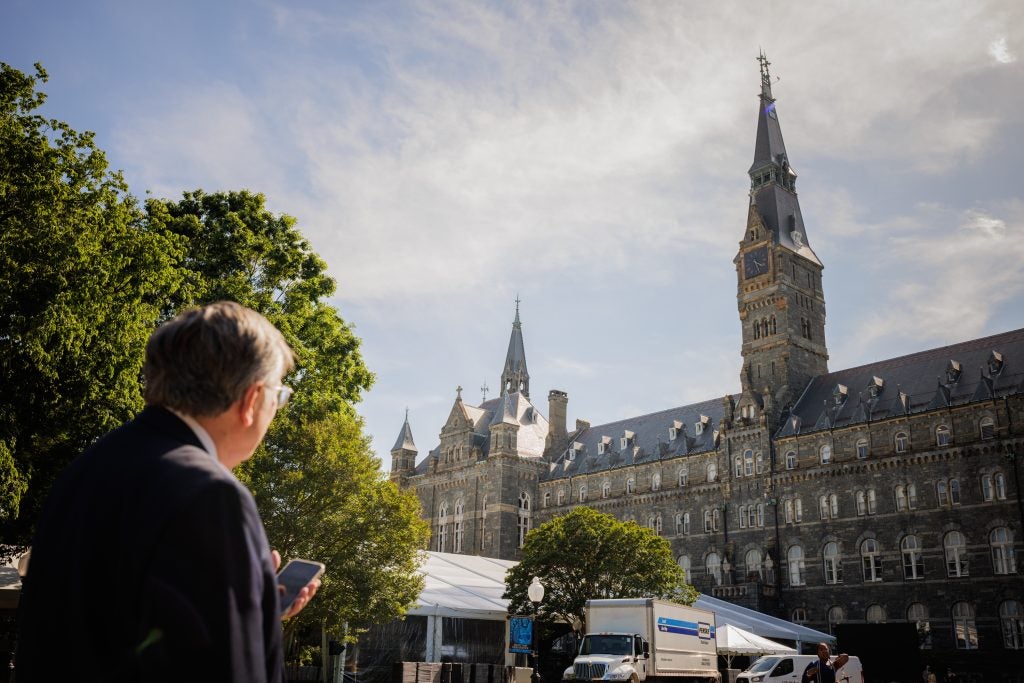
It’s a full team effort to hit every minute, Pierce says, one that involves many helping hands — from the faculty, staff and student volunteers who organize students in classrooms and bring them outside beforehand to the colleagues who help seat students in the tent.
“Because we have so many ceremonies each day, everything has to go exactly to schedule or the whole thing will fall apart,” said Pierce, special assistant to the Provost and registrar emeritus. “Every year is a fresh challenge. If we can get the president to the stage just as the bell is ringing, then that has made my day. And this only works because of all of these community members who are working together to make it happen.”
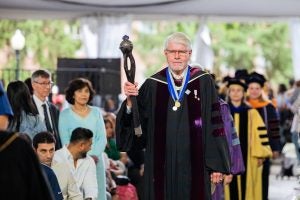
Pierce has served as the chief marshal of commencement for the past 40 years for every school except the Law Center and Medical School. “Like the grand marshal of a parade,” he leads most processions and collaborates on the plans for all of them. In recent years, John Glavin, professor of English and faculty co-chair of the ceremonies planning committee, has also served as marshal for some ceremonies so there is an alternate in case Pierce cannot do a ceremony.
Pierce, Meghan Hogge, director of academic events, and many university partners begin planning for commencement a year in advance. And in a way, their planning process is its own commencement tradition, one that all involved finetune and sharpen every year.
“It’s not a science. It’s an art,” Pierce says of the procession timing. “And it doesn’t always work. But if you don’t try to be perfect, then you never will be.”
Learn more about Georgetown’s many commencement traditions — from its regalia to its artifacts — that make every ceremony time-honored and meaningful every year, with our chief marshal as our guide.
The Georgetown Mace
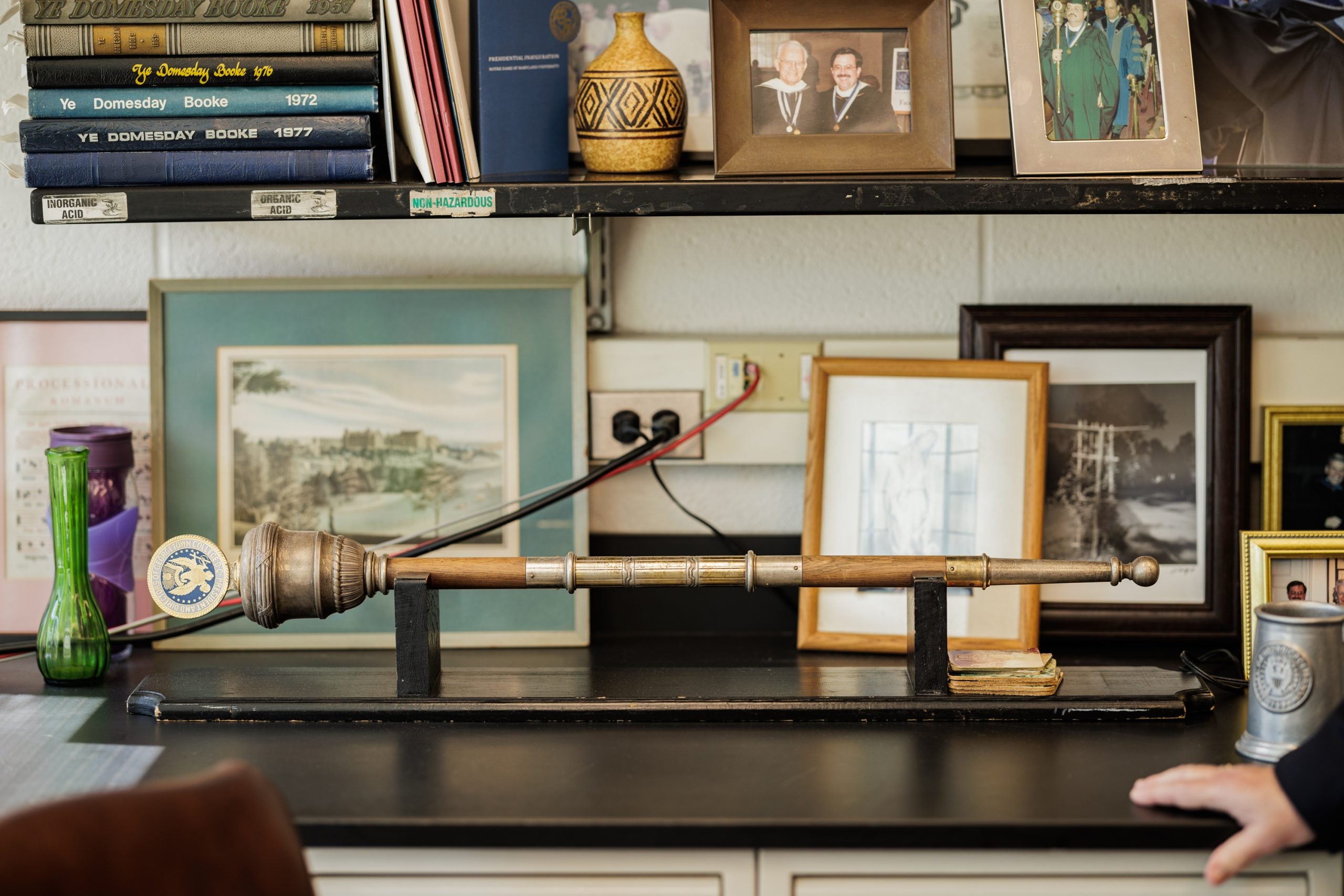
Every year, Pierce leads commencement processions carrying the Georgetown mace, a heavy staff with an azurite stone protruding from the top. In medieval times, maces were used as weapons of war, according to Georgetown’s commencement booklet. In the centuries since, they’ve taken on a more symbolic purpose, granting officials the authority to meet, restore order or pass laws, such as in the U.S. House of Representatives or the House of Commons.
